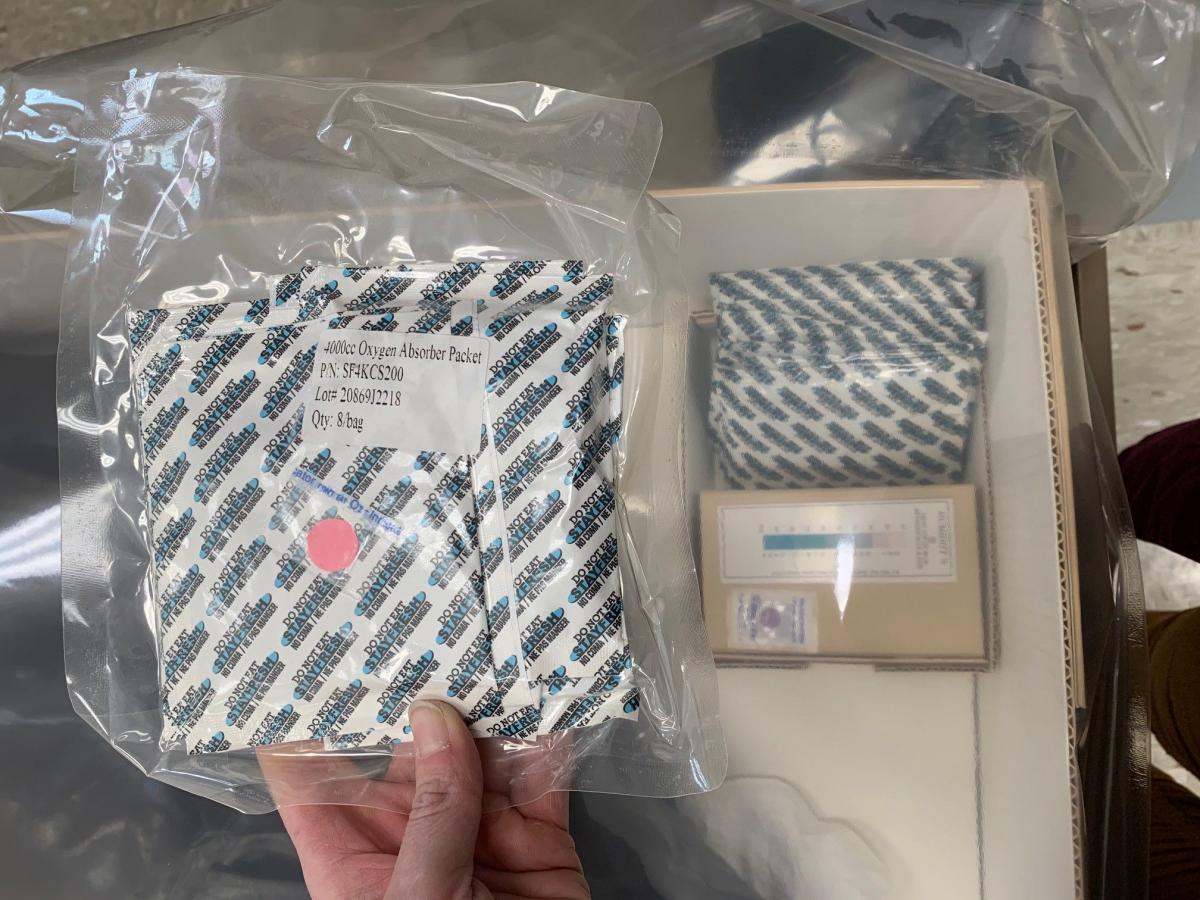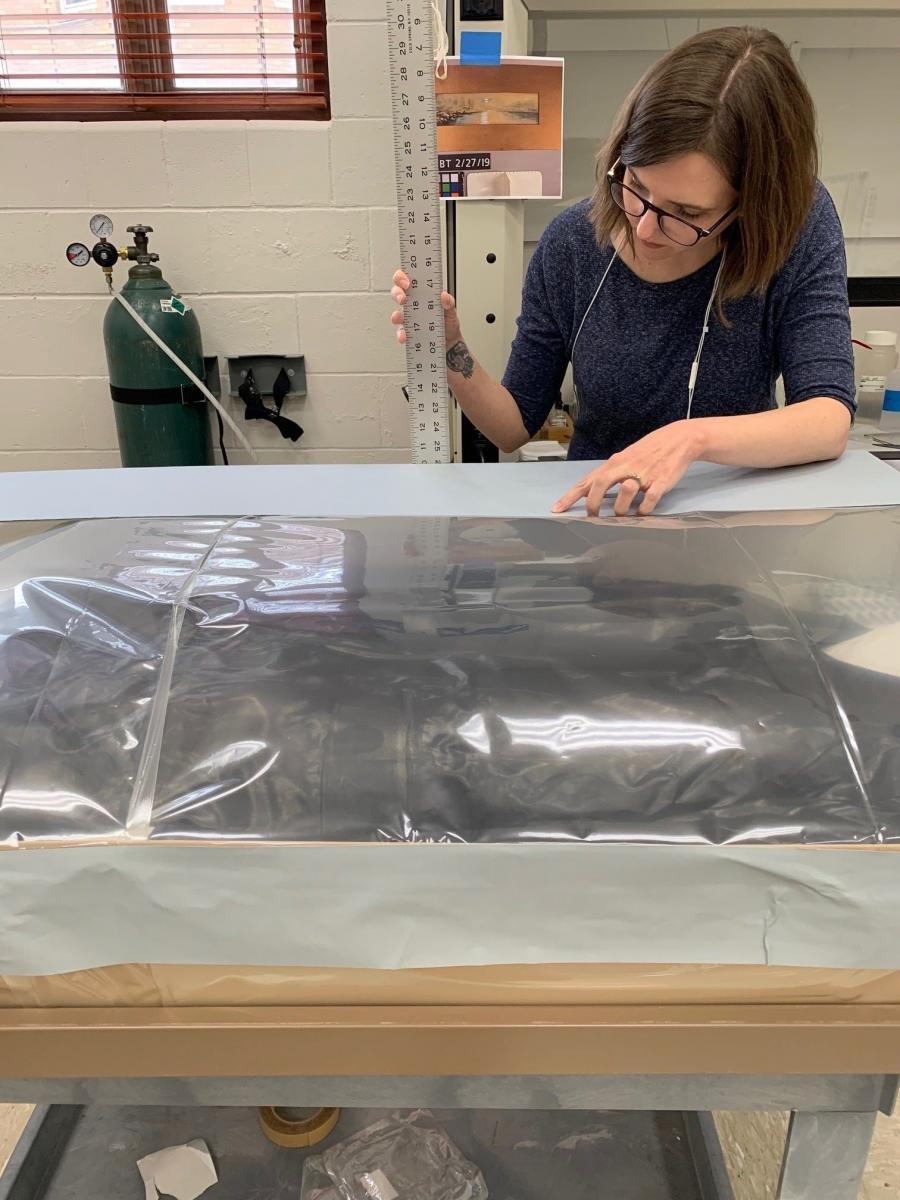The staff in the Objects Lab at the Ford Center had an extraordinary challenge this year. They were presented with a group of twelve archeological rubber raincoats, also known as slickers. This group of rubber raincoats is part of the collection of the Steamboat Bertrand, shipwrecked in 1865 and excavated in 1969 in what is now De Soto Wildlife Refuge.
The double-breasted coats are constructed of loosely woven cotton cloth coated with rubber. The bodies, sleeves, and collars of the coats are adhered together rather than being sewn. Large flapped patch pockets are attached to the side fronts of each coat and closure is secured by four pairs of buttons down the center front.
The coats vary in condition. Some of them are almost like new. The rubber is still very supple and can be easily moved and manipulated. Others are extremely brittle. The slightest touch can cause them to shatter. Because of their materials and construction methods, these rare and fragile artifacts have special support and storage needs. Rubber deteriorates in the presence of oxygen and as it degrades, it off-gasses chemicals that can further damage the materials. The goal for treatment was to create new supports and place each slicker in a oxygen-free environment.
About twenty years ago, the slickers were given new internal supports. These were made with a knitted fabric stuffed with polyester fill material. Over the years, the rubber had continued to deteriorate and stiffen. Ideally, new supports would be created to help maintain their appropriate shape.
Technicians Megan Griffiths and Vonnda Shaw hold open one of the flexible slickers so intern Kayla can photograph the inside. Most of the slickers were too brittle to be able to open this way. You can see the stuffed Tyvek support pillows and the MicroChamber tray.
When they arrived, each slicker was carefully examined and the structural and surface condition of each was documented. Each slicker was gently surfaced cleaned using a soft bristle brush and a HEPA vacuum. Most of the slickers were too fragile to handle and removing the old supports would cause more harm than good. Of the twelve that were brought in, only four slickers received new supports. These were custom made from Tyvek and stuffed with polyester fill material and shredded MicroChamber paper.

Inside the package are oxygen absorbers. After the boxes were flushed with nitrogen, the oxygen absorbers were placed in a small tray to remove the remaining oxygen. The pink dot is an oxygen indicator. In the presence of oxygen, the dot will turn purple, as seen in the tray on the right. Also on the tray is a humidity indicator that shows the humidity inside the packaging. The clear plastic envelope around the box ensures that museum staff can periodically check the slickers for condition issues and the presence of oxygen. They can also make a small opening in the envelope to replace the oxygen absorbers in the near future and reseal the package without disturbing the slickers themselves.
Each slicker was placed on a support board and put inside a open tray. The boards and trays are made of MicroChamber board. Microchamber products contain zeolites that adsorb gaseous chemicals from the air.. The rehoused slickers in their trays each were placed inside a custom-made bag that is impermeable to oxygen. The bags were flushed with nitrogen and oxygen absorbers were put inside to bring own the oxygen levels and slow down the rate of deterioration. Once the oxygen absorbers were placed inside and the nitrogen was flushed, the bags were sealed. Oxygen indicators were placed inside and on the sides of the trays so the oxygen levels can be monitored.

Technician Megan Griffiths measures the height of the “bubble” created when the envelope was flushed with nitrogen. The museum staff has limited room to store the slickers so each box and bubble had to fit withing their parameters.
Although there is nothing that can be done to return the slickers to their original state, the oxygen-free environment can slow down the deterioration so these unique objects can be studied for years to come.



